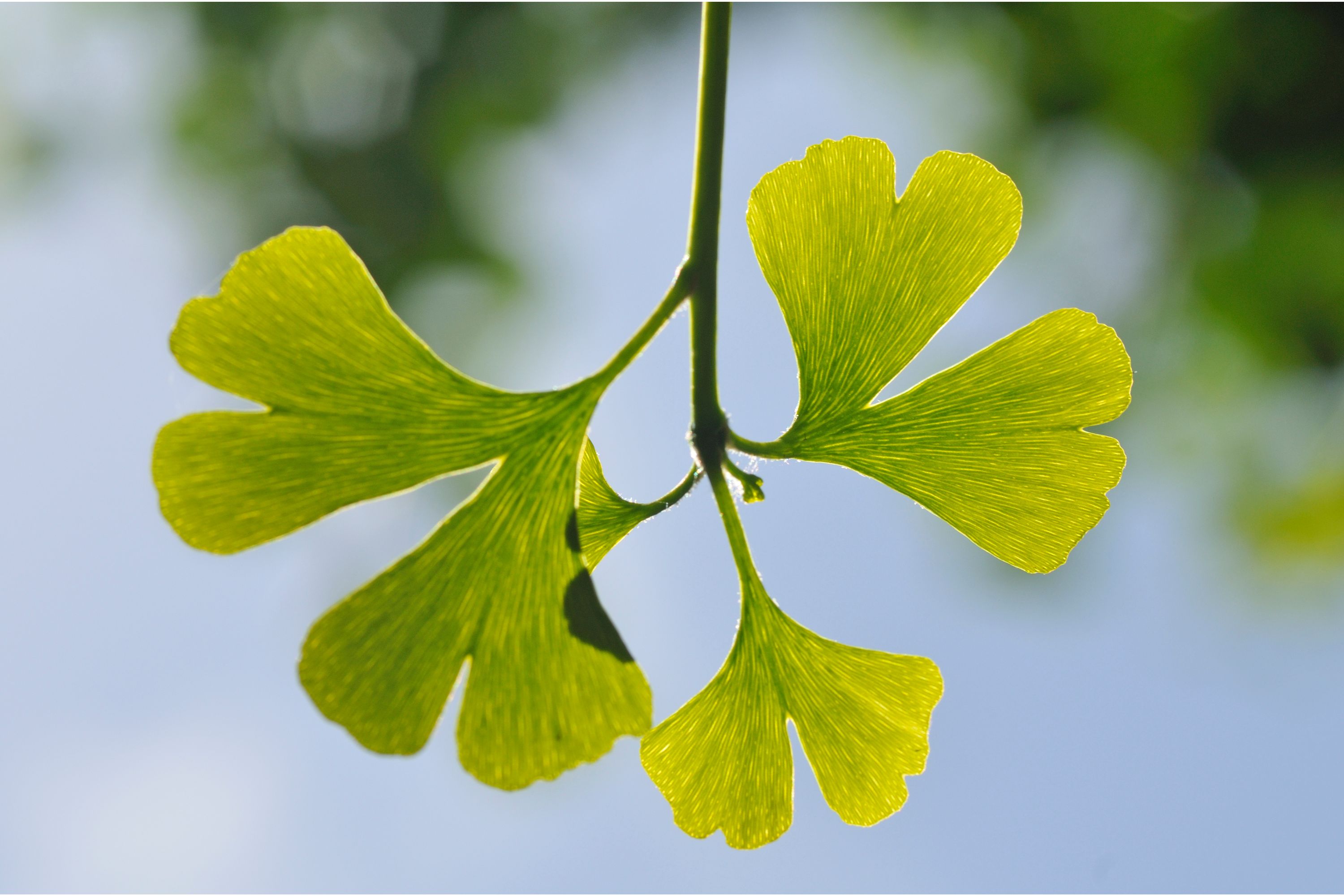Maidenhair tree
(Ginkgo biloba)

Description
Ginkgo biloba, commonly known as ginkgo or maidenhair tree, is a unique and ancient species of tree that is native to China. It is a dioecious tree, which means that there are male and female trees, and only the female trees produce fruits with seeds. Ginkgo biloba is the only surviving species of the Ginkgoales, a group of gymnosperms that were widespread during the Jurassic and Cretaceous periods. The species has been widely cultivated for its medicinal and ornamental values since ancient times, and it is now grown all over the world. In this article, we will explore the taxonomy, morphology, distribution, ecology, cultivation, and uses of Ginkgo biloba, as well as its traditional and modern medical applications. Taxonomy: Ginkgo biloba belongs to the family Ginkgoaceae, which is a small family of gymnosperms that only includes one genus, Ginkgo. The species name "biloba" refers to the leaves of the tree, which are typically divided into two lobes. The genus name "Ginkgo" is derived from the Chinese word "yinxing," which means "silver apricot." The species is sometimes referred to as a living fossil because it is the only surviving member of the Ginkgoales, a group of gymnosperms that were once widespread throughout the world. Morphology: Ginkgo biloba is a tall, deciduous tree that can grow up to 30 meters tall in the wild. The crown of the tree is broad and spreading, and the trunk is thick and stout. The bark of the tree is gray and deeply furrowed, and it becomes more rugged with age. The branches of the tree are also thick and stout, and they grow in a zigzag pattern. The leaves of Ginkgo biloba are unique and easily recognizable. They are fan-shaped and typically measure 5-15 cm long and 5-10 cm wide. The leaves have a distinct dichotomous venation pattern, which means that the veins split into two at the base of the leaf and then subdivide repeatedly to form a dense network of veins. The leaves are usually green in the summer, but they turn a brilliant yellow color in the fall. The flowers of Ginkgo biloba are inconspicuous and typically appear in the spring. The male flowers are small and cylindrical, and they grow in clusters on long stalks. The female flowers are even smaller and are borne on short stalks. The fruits of Ginkgo biloba are fleshy and resemble small, round apricots. They are green when they first appear but turn a bright yellow color when they ripen. The fruits contain a single seed that is surrounded by a fleshy outer layer, which is edible but has a strong odor that is often described as being similar to rancid butter. Distribution and Ecology: Ginkgo biloba is native to China, where it is found growing in the wild in several provinces, including Zhejiang, Anhui, and Henan. It is also cultivated in many other parts of the world, including North America, Europe, and Asia. Ginkgo biloba is a hardy and adaptable species that can grow in a wide range of soil types and climatic conditions. It prefers well-drained soils and a temperate climate with moderate to high levels of rainfall. The tree can tolerate moderate levels of pollution and is often planted in urban areas for its ornamental value and its ability to absorb air pollutants. Cultivation: Ginkgo biloba is a popular ornamental tree that is widely cultivated in gardens and parks around the world. It is also grown commercially for its medicinal uses.
Taxonomic tree:







